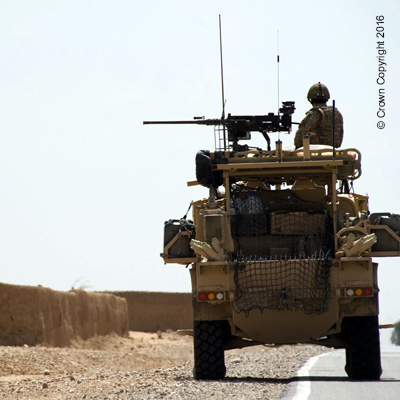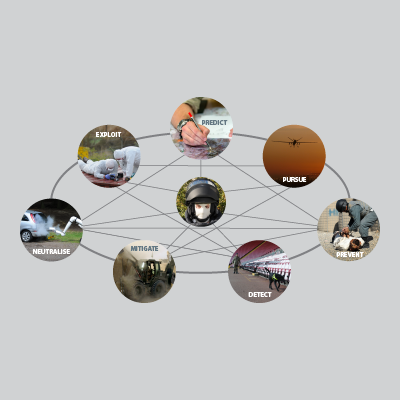In recent years, the CBRN threat landscape has shifted from distant warzones to localised urban environments.
The use of nerve agents and toxic industrial chemicals (TICs), along with the deliberate targeting of local populations, and even targeted assassinations, present many new challenges when making informed decisions within CBRN incident response. With large nearby populations, complex city landscapes, and other environmental considerations, response efforts need to be even more coordinated across groups, including military and civil emergency response agencies, and more informed in order to effectively manage the potential impact.
The rapid growth and convergence of new and emerging technologies offers the potential for unprecedented access to data and information that could provide significant improvements in situational awareness and decision support. However much of the claims and hype around technology can be misleading resulting in misconceptions and unrealistic user expectations on what these technologies can deliver and in what circumstances they should be deployed.
This webinar will provide an overview of a range of available and emerging technologies, from space-based data to advanced modelling services and even artificial intelligence and machine learning, exploring how these could help to manage the complex challenges facing CBRN incident response, planning, mitigation and training within today’s threat landscape. It will also explore the risks and challenges related with these technologies and provide some practical insights that will help address some of the misconceptions to ensure we exploit these technologies to their fullest potential.
The Terrorism Risk Assessment, Modelling and Mitigation Seminar Series (TRAMMSS) is a virtual seminar series focused on technical topics related to terrorism risk assessment, and modelling, including blast modelling and response; IEDs; vehicles as weapons; CBRN; big data for risk assessment, security and screening; and associated mitigation measures.
Speakers
Dr Robert Gordon has an Honours degree in Civil Engineering and a PhD in Particle Image Velocimetry. In his early career, Robert was a postdoctoral researcher at Bristol University, studying and modelling the aerodynamics of birds in flapping flight.
Robert now has 30 years' experience in designing and implementing software solutions for scientific applications. He has spent over 25 years in the CBRN defence sector, applying scientific and technical leadership skills to the development of operational downwind hazard assessment and prediction modelling and simulation applications. Robert specialises in the field of synthetic environments, adopting advanced 3D visualisation techniques to develop operational modelling and simulation systems for UK and US CBRN defence customers.
In his current role as Commercial Director at Riskaware, Robert is responsible for corporate and commercial development strategy and for providing direction to the company as a whole. This has resulted in Riskaware being recognised internationally for its work in CBRN Defence and growing from its initial base of three employees to a total of over 40 employees today. In addition, Robert has been responsible for leading the company's diversification strategy into areas such as marine oil-slick modelling, cyber mission impact assessment and bio-surveillance and epidemiological modelling.
Robert is also the Chairman and a founding member of Riskaware, Urtek Holdings and Dynamic Intelligence Solutions.
Who should attend
This seminar is open to guests from outside Cranfield, who may work in academia, research, or industry. Due to the potentially sensitive nature of this seminar series, guests should be able to show that they are affiliated with an appropriate bona fide organisation.
Cost
The event is free of charge, but participants must register for the TRAMMSS mailing list in advance.How to register
To attend this seminar, you must register for the TRAMMSS mailing list via the online form. Further information on the TRAMMSS community can be found on the main website at cranfield.ac.uk/TRAMMSS.






